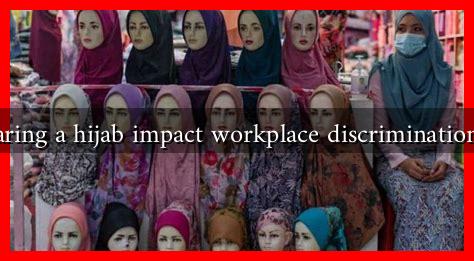-
Table of Contents
Can Wearing a Hijab Impact Workplace Discrimination Claims?
The hijab, a traditional headscarf worn by many Muslim women, has become a symbol of both faith and identity. However, its presence in the workplace can also lead to complex issues surrounding discrimination. This article explores how wearing a hijab can impact workplace discrimination claims, examining legal frameworks, real-world examples, and the broader implications for diversity and inclusion in the workplace.
The Legal Landscape of Workplace Discrimination
In many countries, laws exist to protect employees from discrimination based on religion, including the wearing of religious attire such as the hijab. In the United States, Title VII of the Civil Rights Act of 1964 prohibits employment discrimination based on religion. This includes the right to wear religious garments, provided they do not impose an undue hardship on the employer.
- Title VII of the Civil Rights Act: Protects against discrimination based on religion.
- Equal Employment Opportunity Commission (EEOC): Enforces federal laws prohibiting employment discrimination.
- Case Law: Various court cases have set precedents regarding religious attire in the workplace.
Real-World Examples of Discrimination Claims
Several high-profile cases illustrate the challenges faced by Muslim women who wear hijabs in the workplace. One notable case is that of EEOC v. Abercrombie & Fitch, where a Muslim woman was denied employment because her hijab did not align with the company’s “look policy.” The Supreme Court ruled in her favor, emphasizing that employers must accommodate religious practices unless they can demonstrate undue hardship.
Another example is the case of Ahmed v. University of Wisconsin-Milwaukee, where a graduate student alleged discrimination after being denied a teaching assistant position due to her hijab. The case highlighted the need for institutions to foster inclusive environments that respect religious diversity.
Statistics on Workplace Discrimination
Statistics reveal a troubling trend regarding discrimination against Muslim women in the workplace:
- According to a 2017 report by the Council on American-Islamic Relations (CAIR), there was a 57% increase in anti-Muslim incidents, including workplace discrimination.
- A 2018 study by the Pew Research Center found that 48% of Muslim women reported experiencing discrimination in the workplace due to their hijab.
The Broader Implications for Diversity and Inclusion
Workplace discrimination claims related to hijab-wearing individuals highlight the need for organizations to prioritize diversity and inclusion. Employers can take proactive steps to create an inclusive environment:
- Training and Awareness: Implement training programs to educate employees about religious diversity and the importance of inclusion.
- Policy Development: Establish clear policies that protect employees from discrimination based on religious attire.
- Support Networks: Create support groups for employees from diverse backgrounds to foster a sense of belonging.
Conclusion
Wearing a hijab can significantly impact workplace discrimination claims, as evidenced by legal precedents and real-world experiences. While laws exist to protect individuals from discrimination based on religion, the reality is that many Muslim women still face challenges in the workplace. By understanding the legal landscape, examining case studies, and recognizing the importance of diversity and inclusion, employers can create a more equitable work environment. Ultimately, fostering an inclusive workplace not only benefits employees but also enhances organizational culture and productivity.


